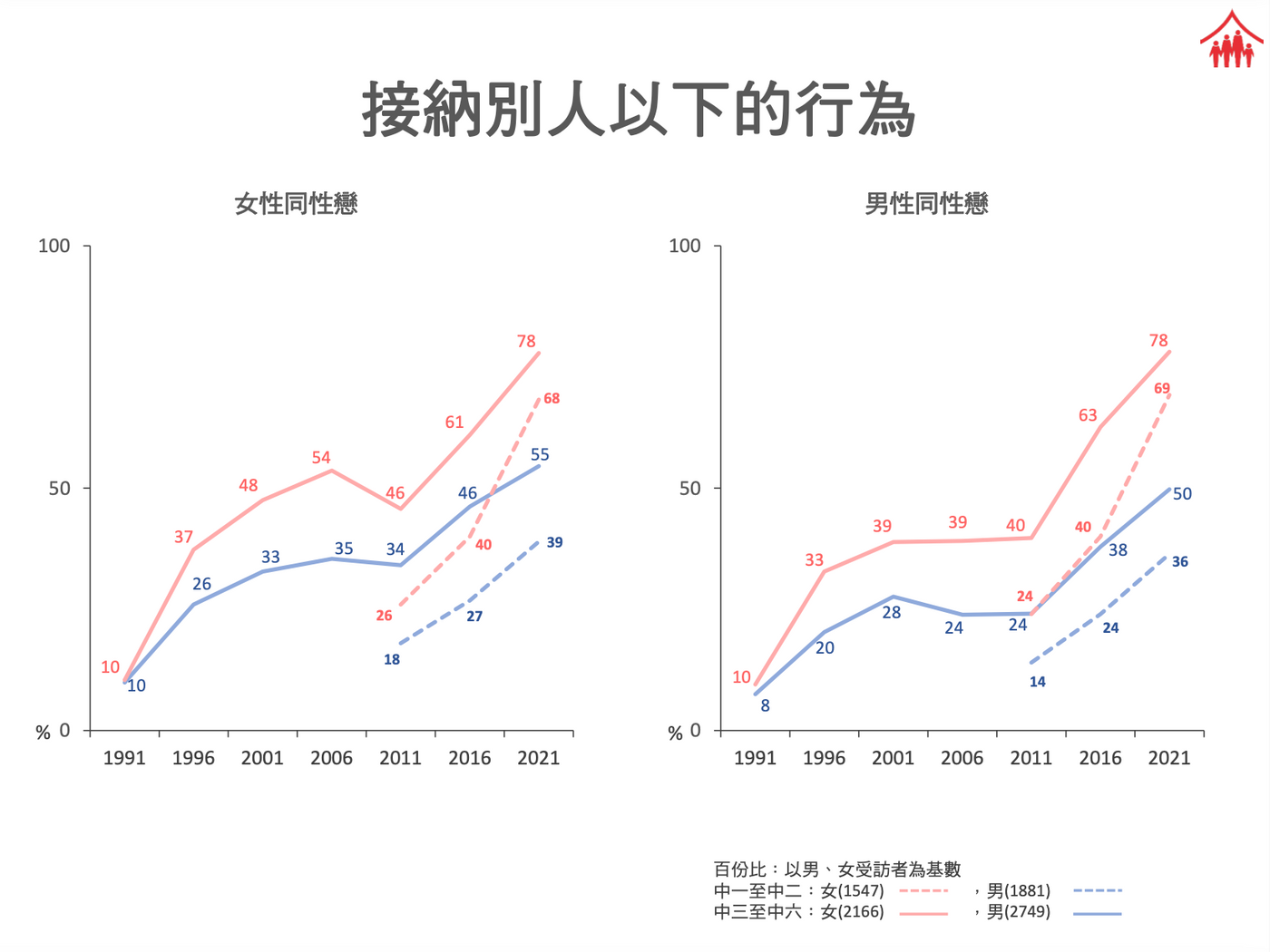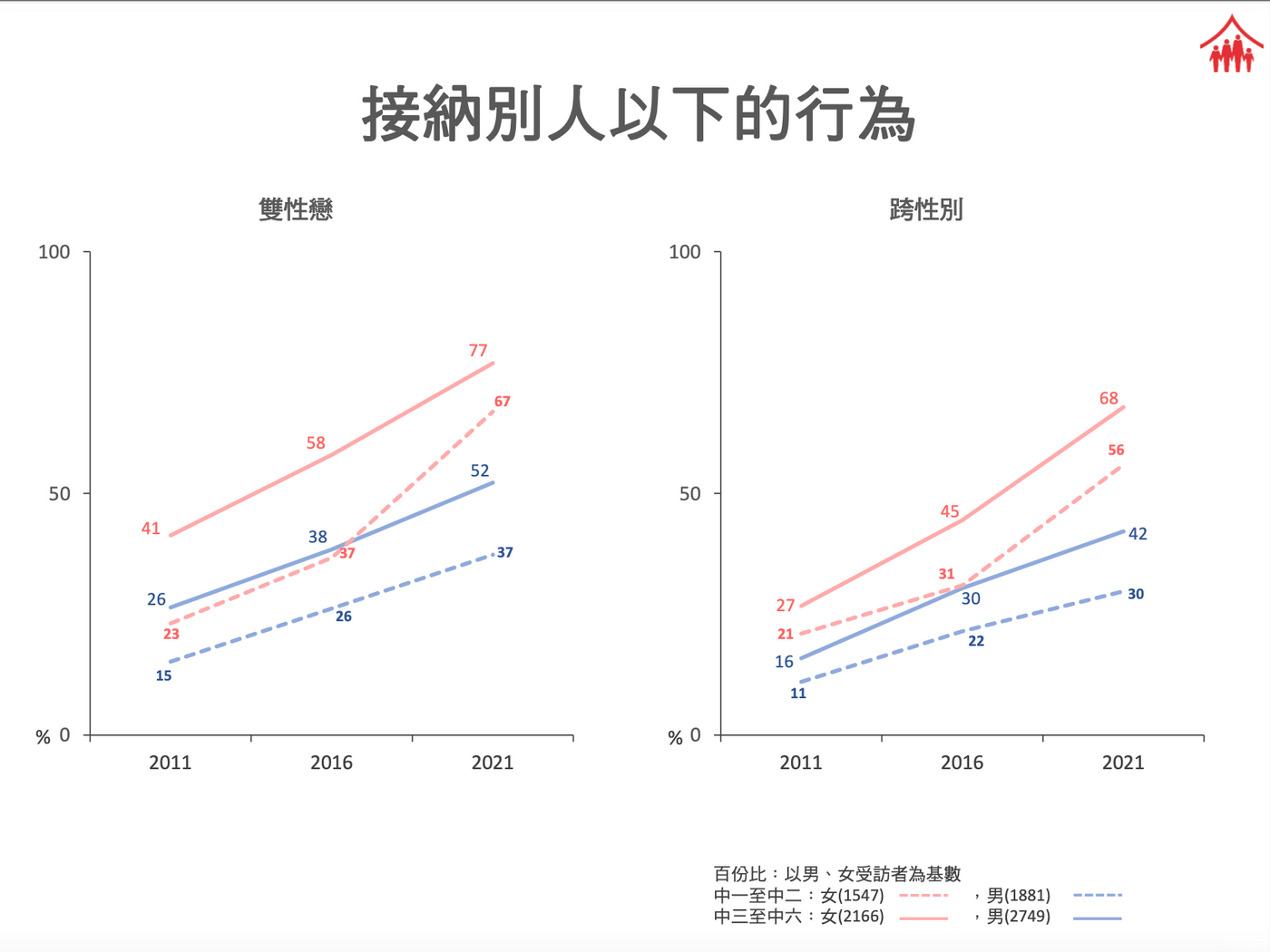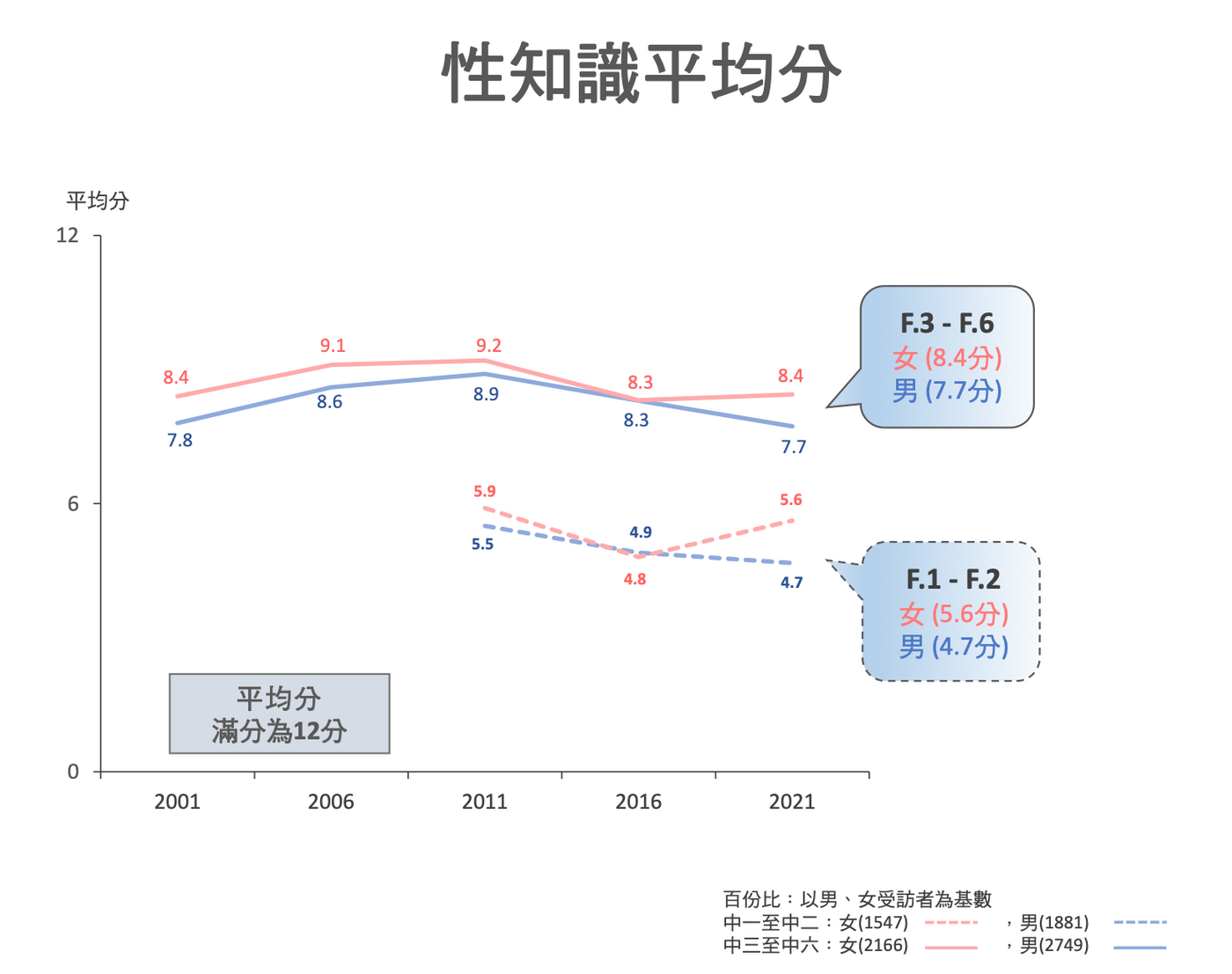
G點電視以新媒體介入性/別小眾運動,鼓勵及引導義工成為行動者、尋找自己感興趣的議題,學習營運媒體,為社群充權。請賞我們幾個拍手或一杯咖啡,讓我們支持平台及團隊持續運作。
[Family Accounting Association Census] Middle school students' acceptance of gender/gender minorities has been rising for 10 years, but half of junior high schools are wrong

Written by: Cindy
Text Editor: Chris
Website Editor: EQ
Follow GDotTV Telegram Channel,
Stay up-to-date with the latest news on G-spot TV!
"Can extravaginal ejaculation make a woman pregnant?" "STIs only affect the genitals?" Are you confident in answering these basic sexual knowledge questions? The Hong Kong Family and Family Planning Association recently announced the results of the "Adolescent and Sexuality Study" conducted every five years. Among the more than 8,000 middle school students interviewed in Hong Kong, high school students answered only 2 out of 12 questions about pregnancy and sexually transmitted diseases. Generally, junior high school students can only answer half of the answers correctly, which shows that the level of sexual knowledge of middle school students is similar to that of five years ago, and it is still not as good as ideal. In addition to surveying secondary school students’ opinions on topics such as sexuality, dating, sexual orientation, and gender temperament, this study also included gender identity questions for the first time. 14% of the students surveyed said they “did not know” their gender identity, and 4% thought that Their gender identity is different from their biological gender, and some people have considered transgender. Encouragingly, the study found that acceptance of LGBT among secondary school students has increased significantly from five years ago, continuing the upward trend of the past 10 years.
The acceptance of gender/gender minorities has increased significantly, and the rise of junior high school students is particularly significant
In order to understand the knowledge, attitudes and behaviors of young people in Hong Kong on sexuality, the FPA has conducted a "Youth and Sexuality Study" every five years since 1981. The newly released 2021 study randomly sampled secondary schools in all districts in Hong Kong, and interviewed a total of 8,343 secondary one to six students, with the ratio of male and female students being nearly half.
The study found increased awareness and acceptance of gender diversity and sexual orientation among adolescents, indicating that the number of male and female students who accepted others as a gender/gender minority (lesbian, gay, bisexual and transgender) compared to five Years ago, there was a significant increase, with an increase of 10 to 25% for different genders and age groups, especially for junior high school students. Among secondary 3 to 6 students, nearly 80% of girls and more than half of boys accept homosexuality and bisexuality; although their acceptance of transgender is slightly lower than that of homosexuality, as high as 70% of girls and 40% of boys accept transgender .


20% of girls and 10% of boys self-identify that bisexuality is more common
In terms of sexual orientation, most of the interviewed middle school students consider themselves heterosexual, accounting for nearly 60% of girls and 70% of boys. About 22% of the interviewed girls and 12% of the boys considered themselves to be sexual minorities (including homosexuals, bisexuals, pansexuals and asexuals, etc.) are bisexual, and 4.5% of boys. It is worth noting that about 5% of both male and female students clearly stated that they are asexual (not attracted to people of the opposite sex, same sex or any gender), while 1 in 6 interviewed students said they "don't know" their sexual orientation.

For the first time, this study also included a question related to "gender identity". Over 80% of the students interviewed believed that they were cisgender (gender identity and biological sex were the same), but about 14% of the students said they "don't know" about their gender identity. A small number of students indicated that their gender identity was different from their biological gender, which was more common among girls (4%) than boys (2%). Among these students, about 20% of girls and 30% of boys had considered transgender.
The level of sexual knowledge has not improved in five years, and the average of junior high school students is only half correct
Compared with middle school students' increased awareness of gender diversity and sexual orientation, their basic knowledge is still poor. For example, only half of middle school students know that "sharing syringes can spread AIDS", and more than half of middle school and high school students mistakenly believe that "before menstruation." Two-week intercourse has a lower chance of pregnancy" and "extravaginal ejaculation does not cause pregnancy". Research shows that, on average, Secondary 3 to Secondary 6 students can only answer correctly 8 of the 12 knowledge-based questions, and their performance has not improved significantly compared with 2016. Students' performance on some of the questions is even worse than five years ago; The sex knowledge of secondary school students is even less ideal. Generally, they can only answer 5 to 6 questions correctly.

The study also found that safe sex, sexually transmitted diseases and sexual health were the most desirable sex education topics for students, second only to adolescence, dating and dealing with sexual harassment. Among middle school students with dating experience, more than 40% had conflict with their partner during dating, and more than 65% had broken up for various reasons such as personality incompatibility, lack of feelings, and problems due to lack of understanding. According to Dr. Lim Huixiang, executive director of the FPA, the report points out that schools and families should strengthen comprehensive sexuality education and information literacy education, starting from lower grades, and comprehensive sexuality education should cover intimacy, safe sex, gender identity, sexuality Diversity issues such as orientation and gender-based violence.
The epidemic increases the risk of online sexual violence, social media becomes a new channel for pornography
Affected by the epidemic, the impact of the online world on middle school students in terms of sexuality is particularly significant. In 2021, 60% of the girls and 65% of the boys surveyed said they had been exposed to pornography through social media, a significant increase from about 30% (girls) and 60% (boys) in 2016; about 3% for girls and 7% for boys The number of naked chats was also higher than in 2016. The percentage of students who had been cyberbullied remained the same as in 2016 at 10%. In addition, about 5% of girls and 9% of boys had experienced video-based sexual violence, and about 17% of girls and 24% of boys had received sexually explicit text (such as text messages describing sexual intercourse), pictures or videos.
Dr. Lin Huixiang reminded that under the epidemic and social distancing measures in the past two years, middle school students have spent more time online, and social media is full of various false sexual information, increasing their risk of exposure to pornography, naked chat, and video-based sexual violence . Educators and parents should keep up with the times and increase their awareness of social media to help middle school students build the sexual knowledge and life skills they need.

Original link G-spot TV
Like my work?
Don't forget to support or like, so I know you are with me..
Comment…